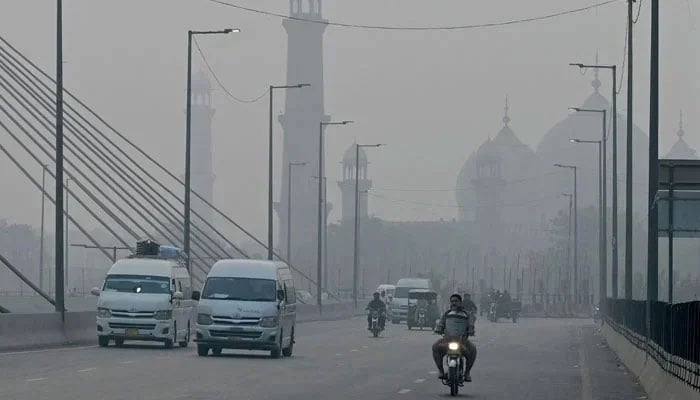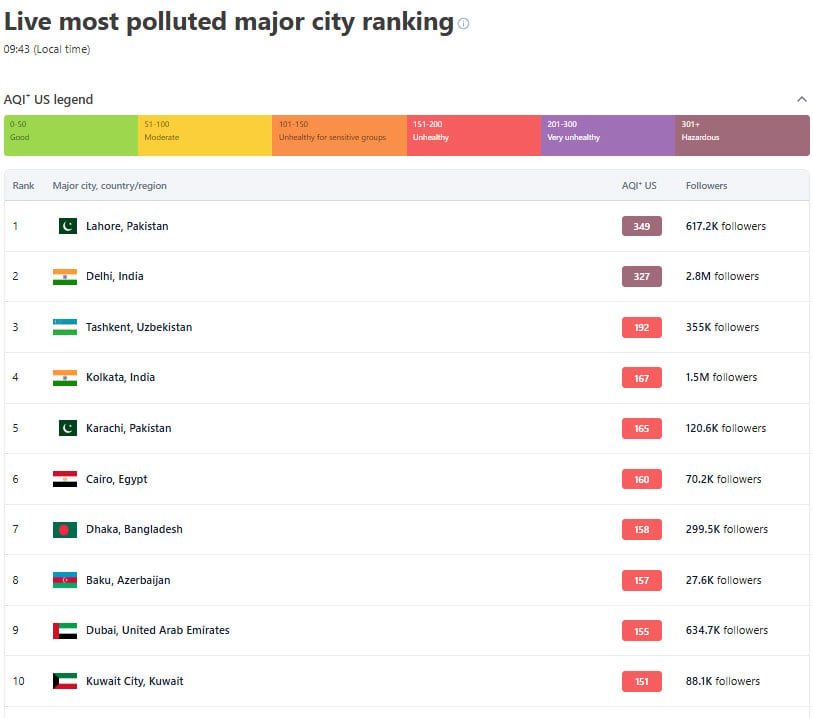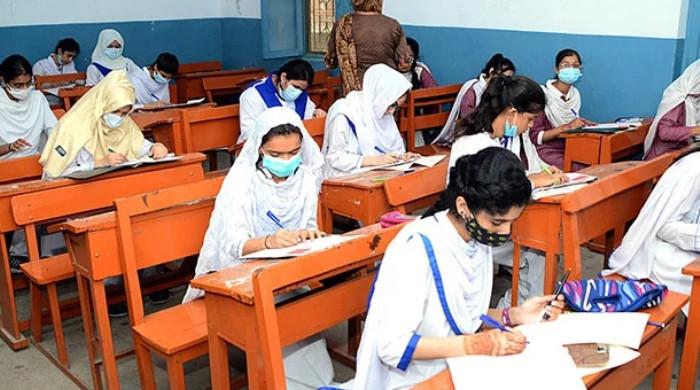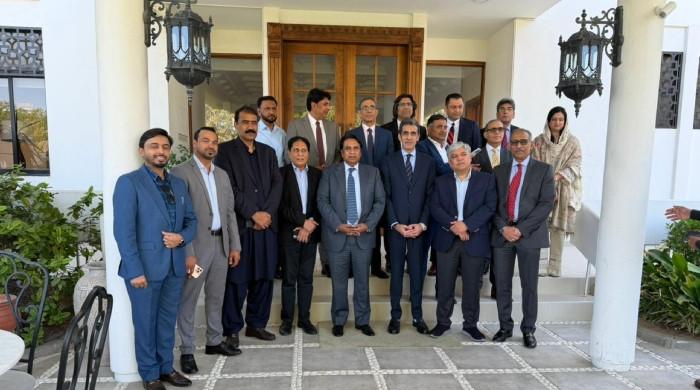Lahore again tops global pollution chart amid worsening smog
IQAir reports Lahore’s air quality at 49.5 times above WHO safety limit
October 26, 2025

- Heavy smog continues to envelop the city and its surroundings.
- IQAir reports place Punjab capital in “hazardous” category.
- Karachi ranks fifth, classified "unhealthy" for sensitive groups.
Punjab’s capital Lahore has been ranked as the most polluted city globally on Sunday, as heavy smog continues to envelop the city and its surroundings.
According to the air quality monitoring platform IQAir, Lahore recorded a US Air Quality Index (AQI) of 349 at 9:43 am, placing it in the “hazardous” category. The PM2.5 concentration was measured at 249.5 µg/m³ — nearly 50 times higher than the World Health Organisation’s (WHO) annual air quality guideline.
The toxic haze has left the city shrouded for days, reducing visibility and causing widespread health complaints, including throat irritation, breathing difficulties and itchy eyes. Public health experts have advised residents to limit outdoor activity and wear protective masks when necessary.

The severe air quality coincides with the onset of winter, when cooler temperatures, stagnant winds, and emissions from vehicles, factories and crop burning trap pollutants close to the ground across Punjab.
In contrast, Karachi recorded a US AQI of 165 classified as unhealthy for sensitive groups, with PM2.5 levels reaching 74.8 µg/m³, which is 15 times above the WHO’s recommended limit. The port city is ranked fifth in list most polluted cities in the world.
Meanwhile, India's captial New Delhi is also grappling with significant air pollution levels, ranking second among the most polluted cities with an AQI of 327, categorised as very unhealthy.
The PM2.5 concentration in the Indian capital reached 448 µg/m³, primarily attributed to vehicular emissions, industrial activity, and stubble burning in neighbouring regions.
Every winter, much of South Asia experiences a surge in pollution as cold air traps fine particles near the surface. Emissions from transport, factories, construction dust and crop residue burning all contribute to the dense smog that lingers for weeks.
Health experts warn that prolonged exposure to such high pollution levels can lead to severe health issues, including stroke, heart disease, lung cancer and chronic respiratory illnesses — a growing concern for millions across South Asia.
Meanwhile, Punjab’s first advanced Smog Monitoring and Control Centre, equipped with modern technology, is continuously collecting air quality data. Anti-smog guns are also being deployed at identified smog hotspots across Lahore in a bid to reduce particulate pollution.









